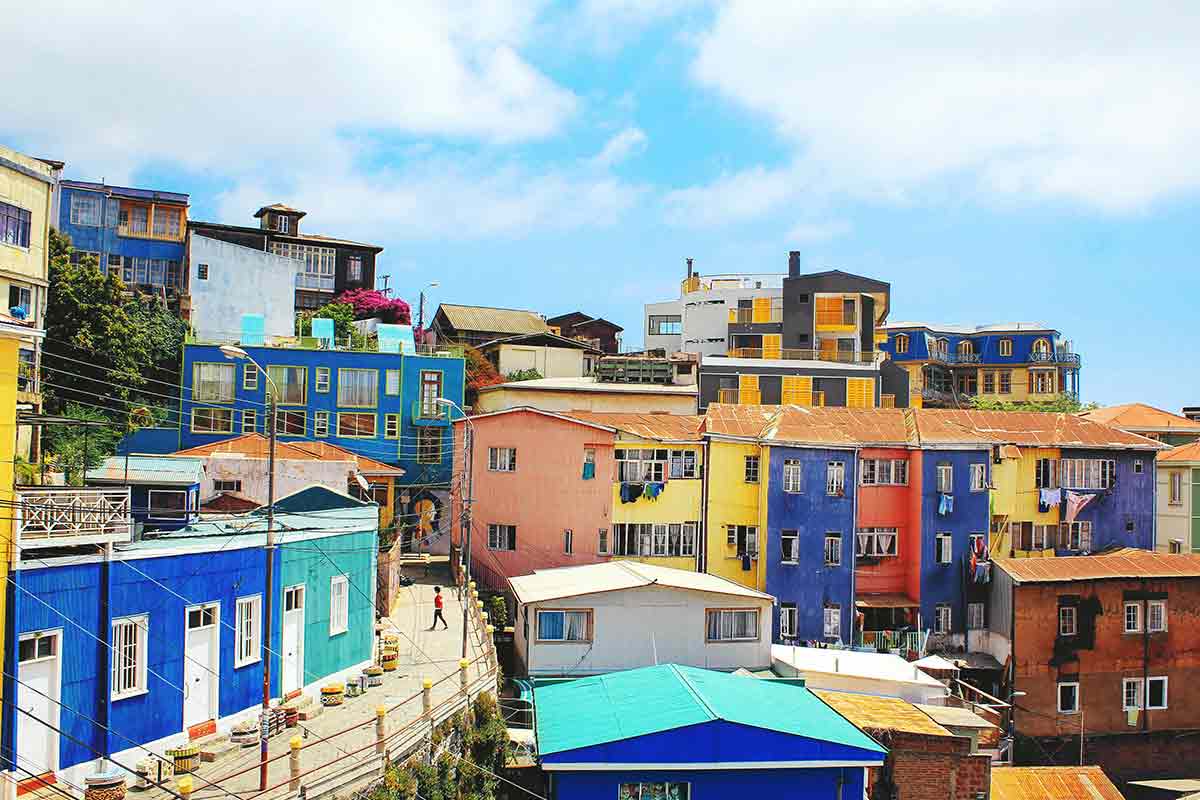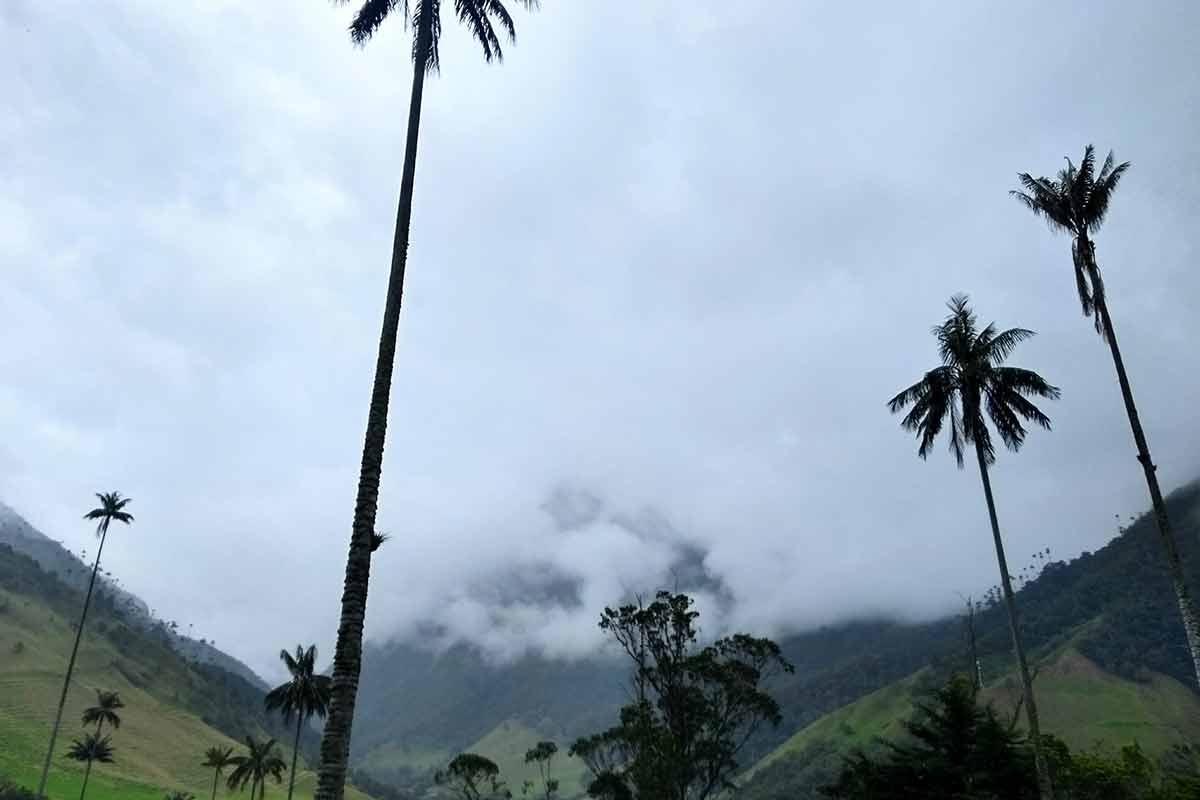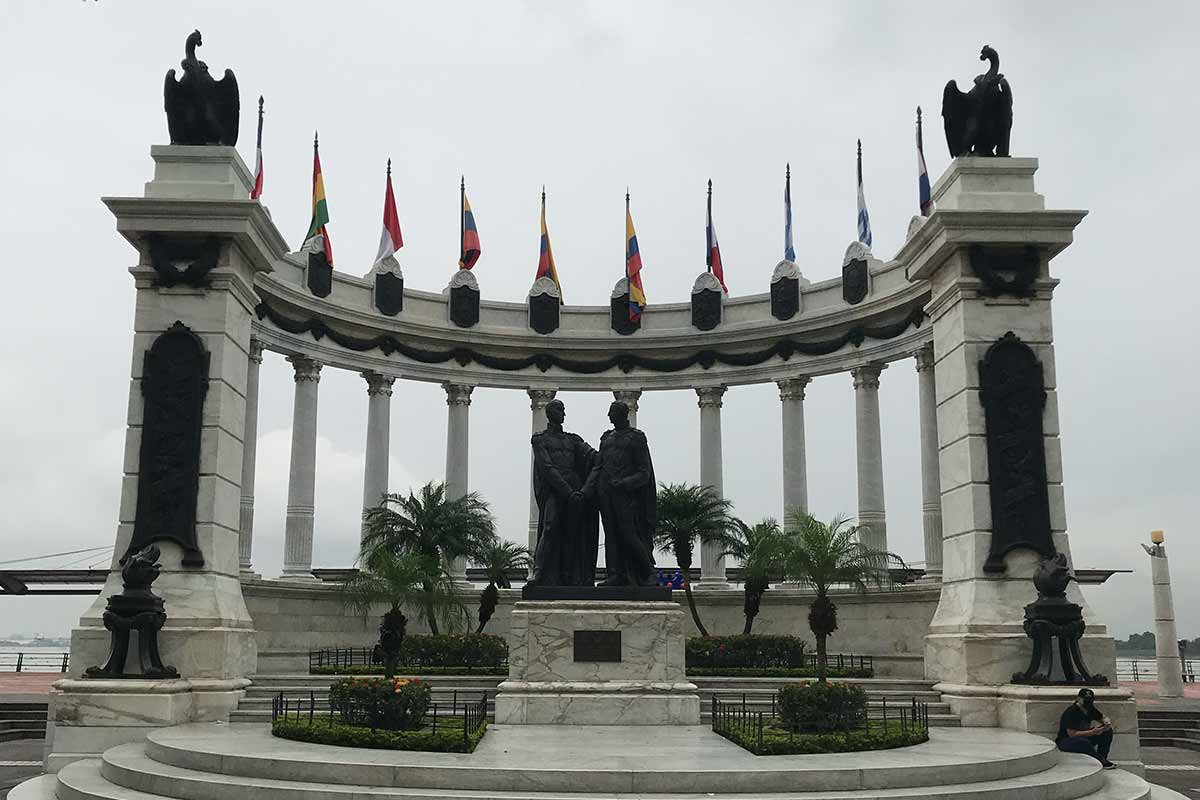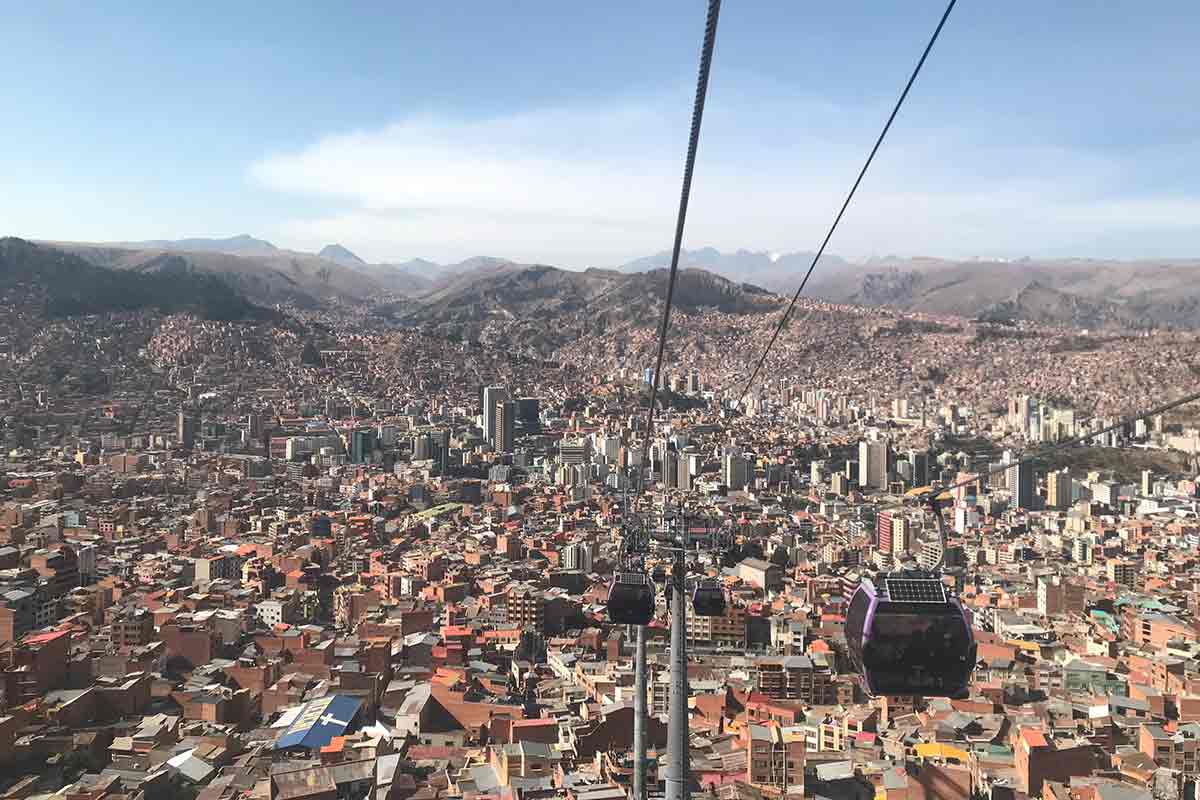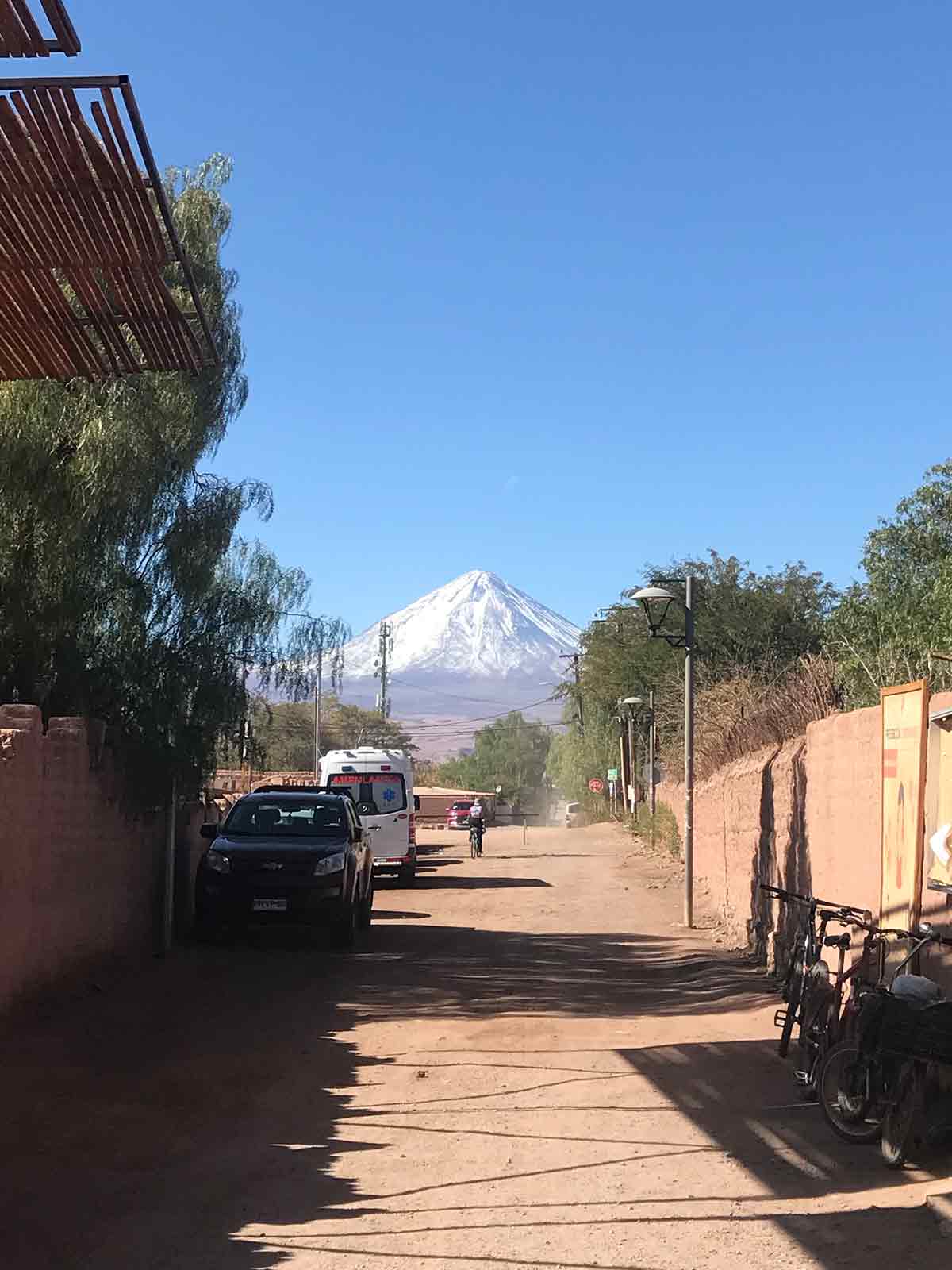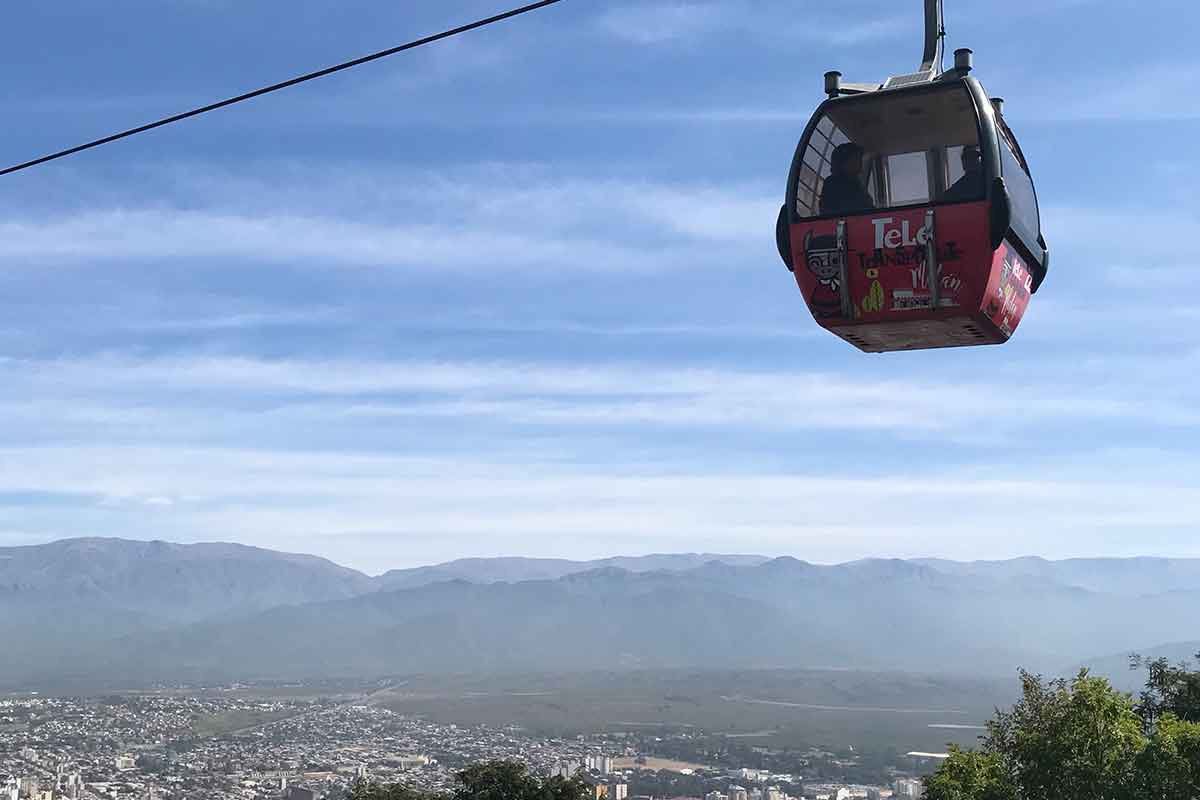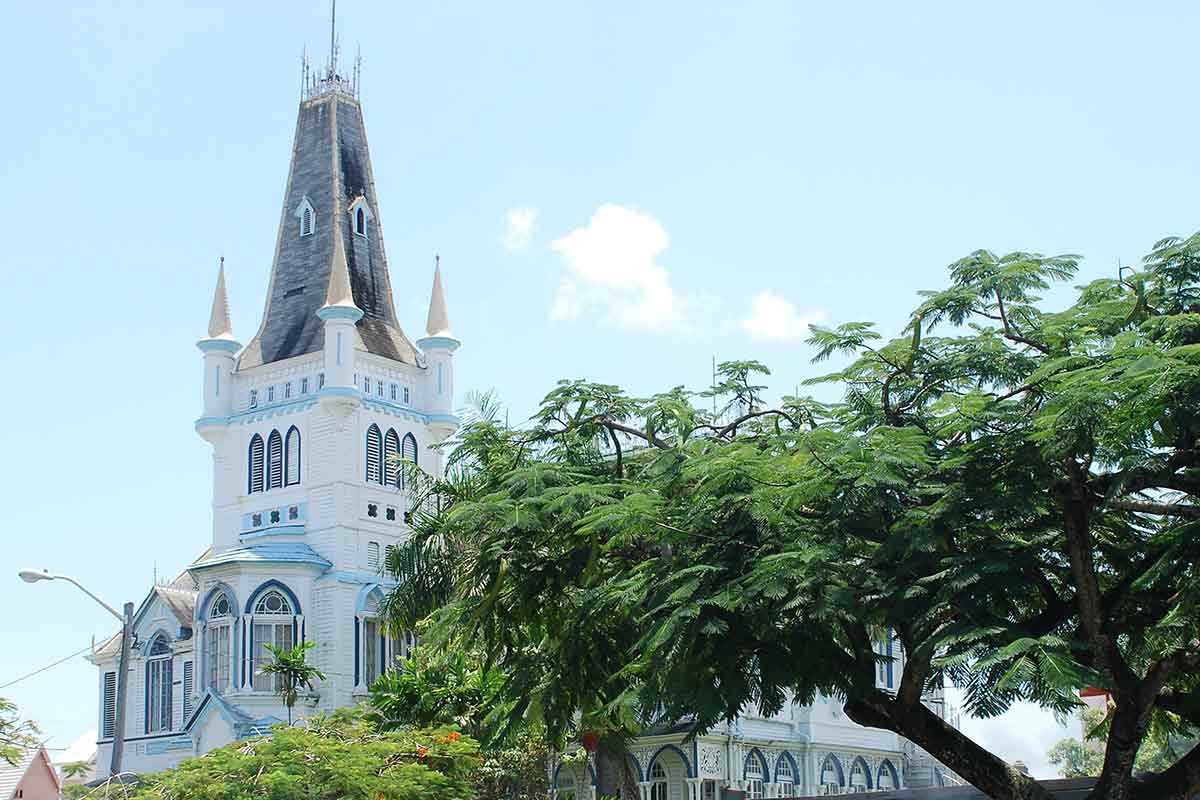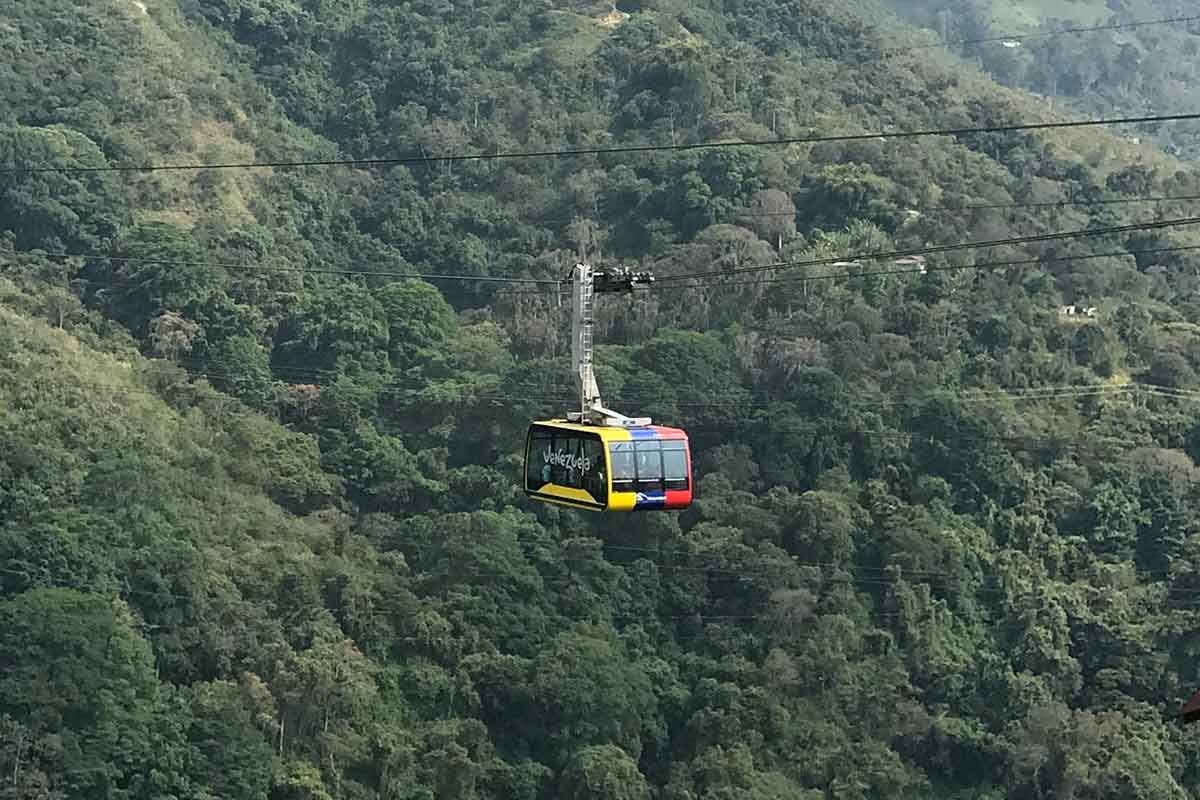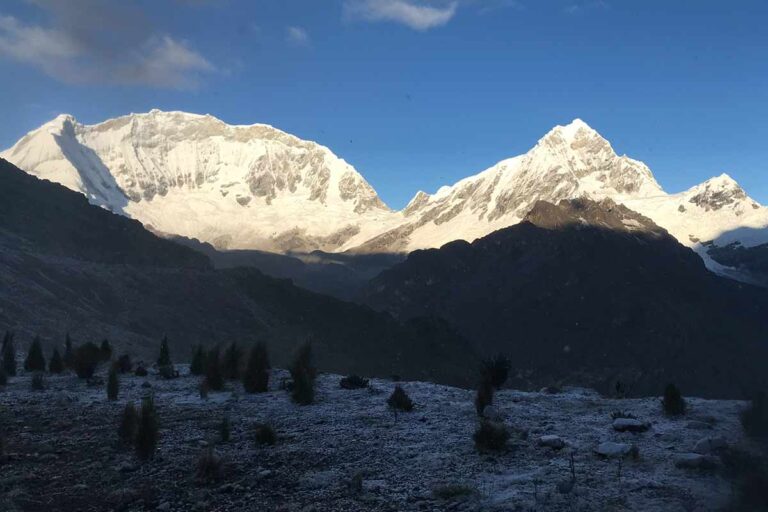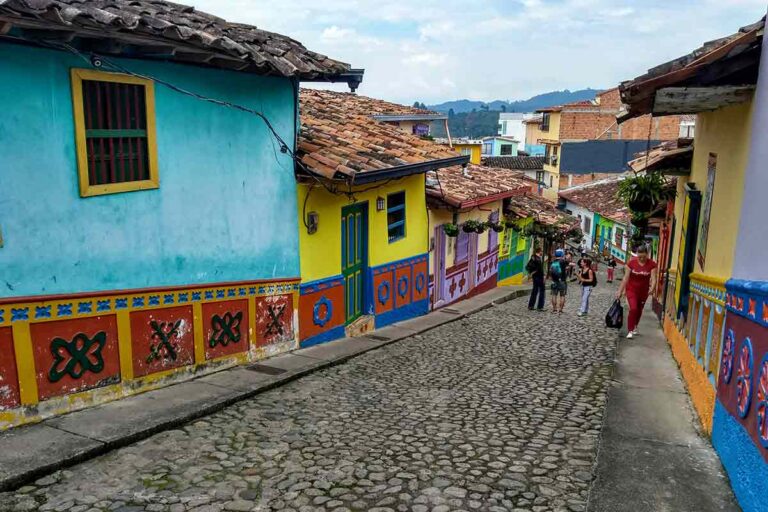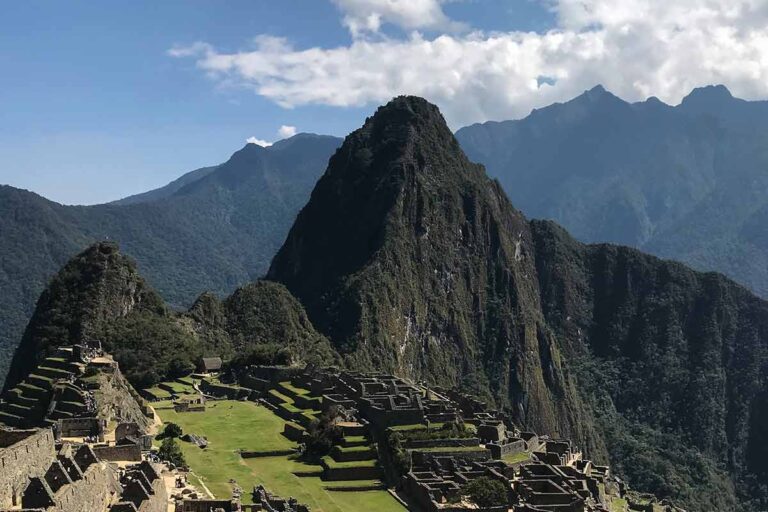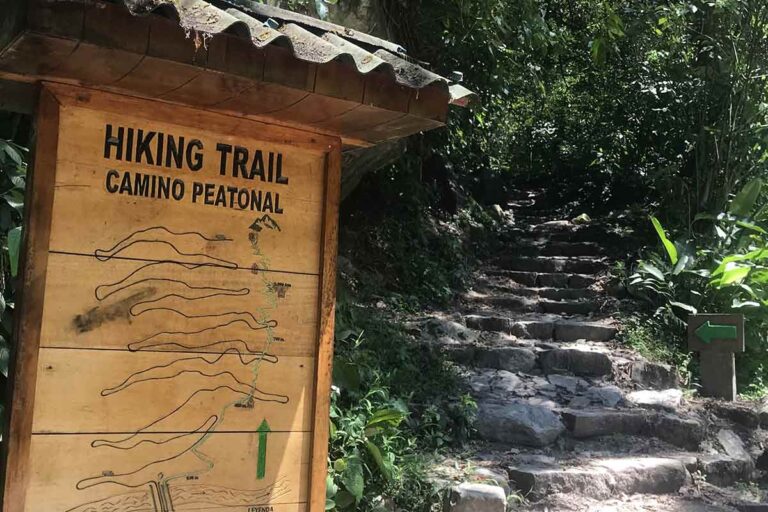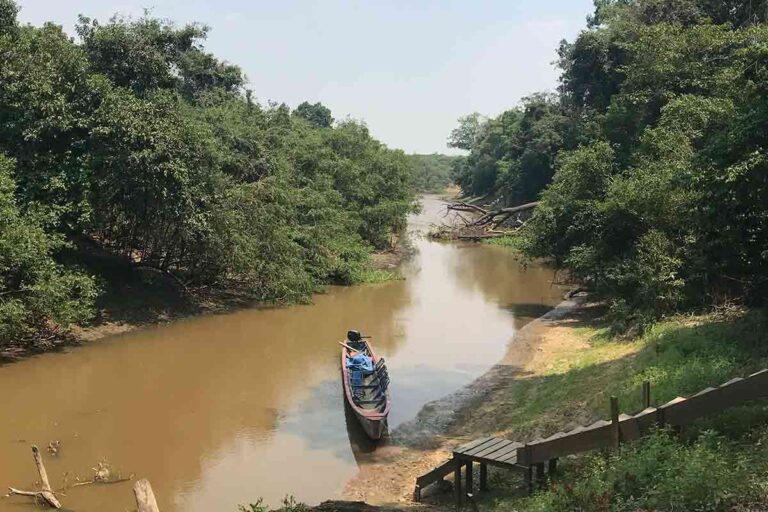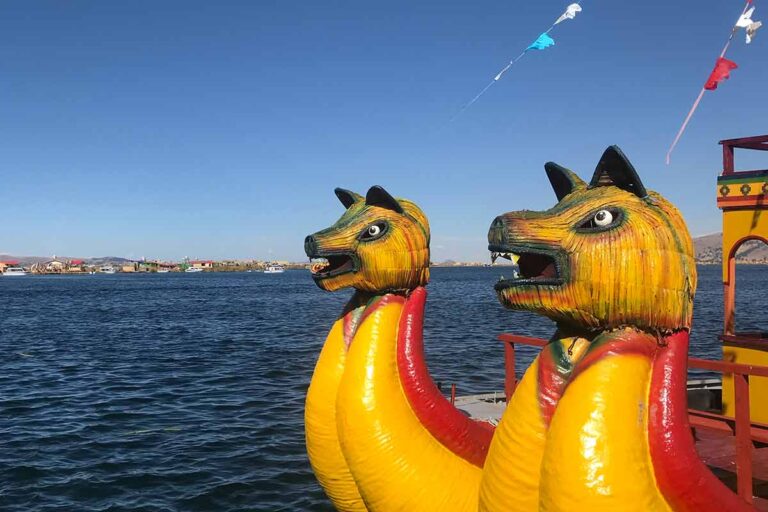Best time to visit South America
In this guide, we will explore the best time to visit South America.
We’ll look at the weather by country and observe things such as wintertime, summertime and average temperatures to give you a better idea of when to visit each country.
South America is a humungous continent! One thing every backpacker must know is that the weather varies by country and by season.
So, depending on where you go (i.e. the Southern Cone) it’s worth checking local forecasts for your chosen region to ensure you visit at the right time.
Best Time to Visit South America
As backpackers, it’s smart to be aware of weather conditions, not only for safety but to ensure we maximize the most of our time.
When you’re thinking of backpacking South America you need to know where and when to go, yes for climatic reasons, but also for cultural + budget reasons too.
Let’s start by looking at the the continent’s most northern countries:
Best Time to visit Colombia?
Colombia is located close to the Equator and has what is called an equatorial climate. Whilst Colombia does have a seasonal weather pattern with a dry and wet season, it’s not that extreme.
However, within Colombia, there are climates that vary quite substantially, with some areas in the mountains getting very cold, to the oppressive heats along the Caribbean Coast.
The Caribbean Coast
Includes the destinations of Cartagena and Santa Marta. Also to mention, the cities of Bucaramanga and Cali also follow a similar pattern so take note if planning on visiting these.
Average temperatures range from as high as 86-90°F, with lows down of 75-79°F, which are pretty consistent regardless of the time of year.
From December to April, also known as the dry season, there’s virtually no rain, making it a great time to visit. It’s especially good for those looking to join an organized expedition to the Lost City, given you won’t be getting soaked every few hours!
The wet season runs for the rest of the year, with anywhere from 3.5 to 6 inches falling throughout each month. November is historically the wettest month of the year, with over 6 inches of rainfall.
Medellin
Located in central Colombia, Medellin has perhaps the most stable annual climate of all. Temperatures vary between lows of 63°F, with highs of 78°F for all months.
However whilst temperatures are consistent, the rainfall varies extremely and is pretty heavy. January and February are typically the driest months of the year, with roughly 4 inches falling throughout each.
The level of rain then rises dramatically until May, which is the wettest month with over 10 inches falling! Be sure to bring a solid Poncho to keep you dry!
June and the summer months through to October are also quite wet, with between 7-10 inches for each, and roughly 70-80% chance of rainfall on any particular day. Rainfall starts to drop off in November and December.
Bogotá
The capital is a lot cooler than the previous destinations. Temperatures are also consistent throughout the year, with highs of 63-66°F, and lows of 44-48°F.
Rainfall is pretty extreme and varies throughout the year. January is the driest month, with a 24% chance of daily precipitation and around 1.5 inches falling.
Rainfall gradually increases until the peak of April, which with 8.3 inches is the wettest month of the year.
It begins to drop off again through the summer until August, and then sharply increases in October, with around 7 inches falling throughout the month.
November and December see a radical decrease in precipitation heading into the New Year. If backpacking Colombia see our suggested route and places to go in our guide.
Best Time to Visit Peru?
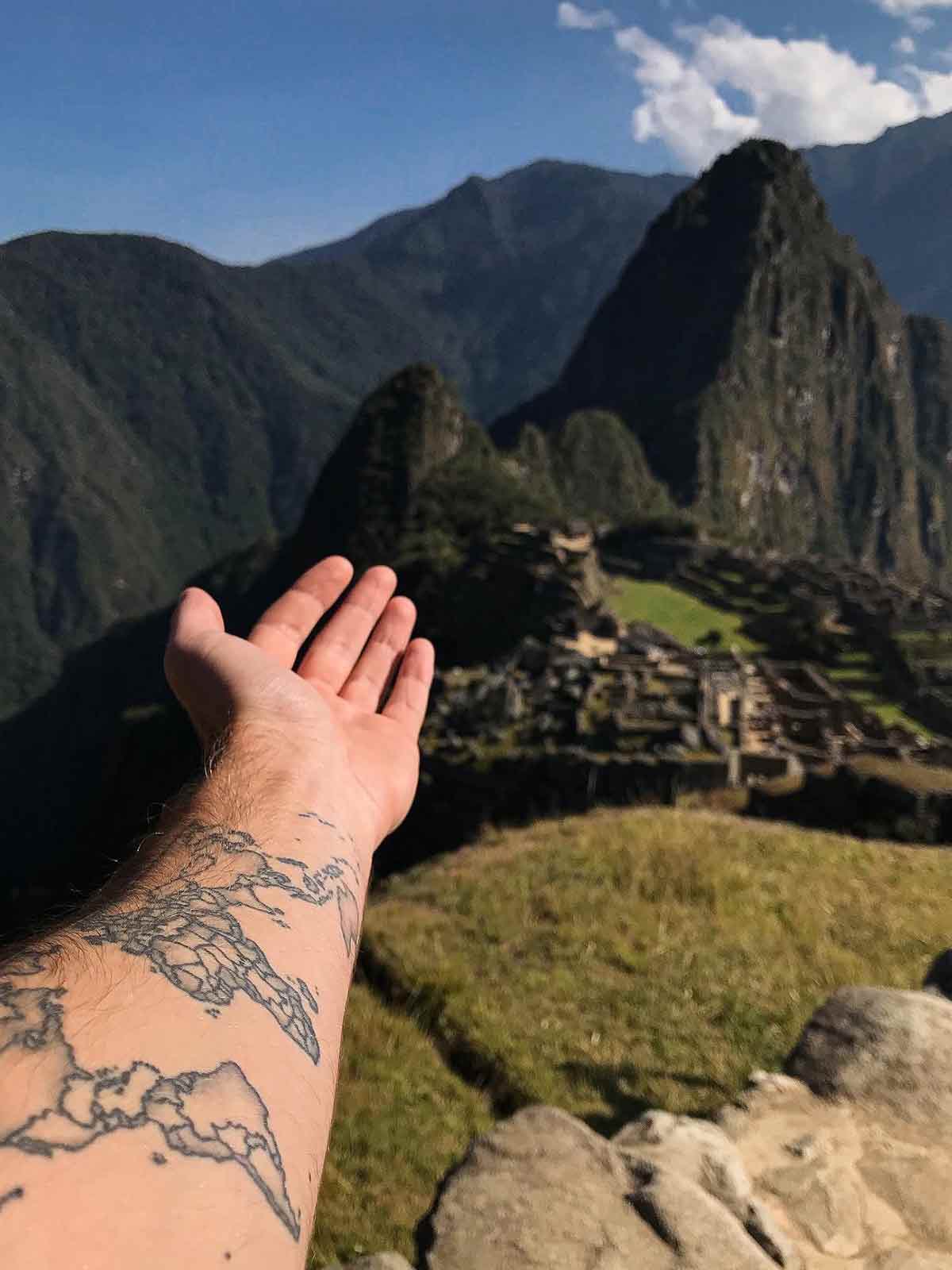
When it comes to the best time to visit Peru you can expect huge diversity. Although the climate in Peru is quite consistent throughout the year overall, different regions can experience wildly different temperatures and seasonal patterns.
Lima
Known by locals as Lima el Gris (Lima the Grey), you can probably guess this that it’s cloudy most of the time!
There’s a clear warm and cooler season, although it’s not that extreme. December until March marks the Summer season, with temperatures ranging from 72-74°F, and highs of up to 81°F.
June until September is the Winter, and is a lot cooler with an average of between 65-67°F. Highs during the Winter range are 70°F, with lows of 59°F.
Rainfall is pretty low in Lima year-round, with between 3-15mm falling for each month. August is the wettest month with 15mm falling.
Cusco and The Andes
You’ll find Cusco (as well as other Andes regions such as Puno) is quite cool year-round, especially so during the night.
From October until April, temperatures are very consistent and average between 50-52°F, with highs of 67°F and lows of 37°F.
May until August is the Winter season, where temperatures drop even lower. July on average is the coolest month to visit with an average of 45°F, with lows of 27°F.
December, January, February and March are the wettest months, With January the overall wettest with around 150mm falling. Precipitation is less for the rest of the year, with May until August receiving very little in comparison.
Those looking to head to Machu Picchu will either want to visit in September/October as well as April/May. We recommend going with this organised day tour which includes all transport as well as the entrance ticket.
The Amazon Regions
Includes Iquitos, Puerto Maldonado and many of the smaller cities dotted around in the rainforest. Iquitos is the most popular, so we’ll focus on here.
Temperatures are almost the same all-year round, with averages ranging from 79-81°F. Highs can range anywhere from up to 90°F, with lows of between 70-72°F.
In terms of rainfall, the Amazon is very very wet. July and August are the driest months of the year (well in comparison) with 200mm of rainfall falling throughout each.
April is the wettest, with a pretty big 330mm falling, with around 17 days of rainfall. The rest of the year is also pretty wet, with between 230-310mm of rainfall for each month.
When trekking through the Amazon, a solid pair of hiking boots is essential. We recommend this pair for the guys, and also this pair for the girls.
Best Time to Visit Ecuador?
Located smack bang on the equator (hence the name), Ecuador has probably one of the least chaotic weather patterns, and thus more stable and predictable. See this guide to weather in Ecuador for more details.
Quito (+ the Andean Highlands)
This region also includes the popular destinations of Cuenca and Otavalo. Mornings and early afternoons are pleasant, with rain more likely later in the day. Average temperatures are consistent for all months, with an average of 55-56°F.
Highs can reach up to 66°F, with lows of 46°F. There is a seasonal rain pattern though which is useful to know. February, March and October are the wettest months to visit, with between 80-100mm falling throughout each.
The summer months of June, July and August tend to be drier, with July the driest month of the year with only 20mm falling, and less than 5 days of rain on average throughout the month.
The Cotopaxi Volcano hike is a big reason many come to Quito. Those looking to conquer this beast will have the best fortune in the months of December and January. This all-inclusive tour is a good option, where you’ll head up to the glacier and have all transport included.
Baños
Slightly warmer and has on average less rainfall than Quito. Average temperatures hover around 56-58°F throughout the year, with the warmest month being November.
Highs typically range from 65-70°F, with lows of 45-48°F (August tends to be the coolest month).
Despite its location near the Amazon, you’ll be surprised to know that Baños receives very little rain! January, with a grand total of 3mm throughout, is the wettest month of the year.
February until May receives between 1-2mm, with the same amount also occurring between September and December. June until August receives little, if not no rain at all.
Montañita
This coastal paradise is a lot hotter than the highlands and Amazon regions of Ecuador, which are located at much higher altitudes. Temperatures are again
consistent throughout the year, with a sultry average of 77-81°F.
Highs range from 82-84°F, with lows of 70-73°F. The hottest month on average to visit Montañita is March, with highs of up to 85°F. Rainfall is quite unpredictable along the coast, and there’s no particular dry or wet season.
August on record is the wettest month, with up to 150mm falling throughout. July is also pretty wet with around 125mm falling.
February and September are the driest months, with between 30-50mm falling for each respectively. The rest of the year averages between 50-100mmm precipitation for each month.
Best Time to Visit Bolivia?
Bolivia has a dry season which runs from April until October, which is characterized by more consistent weather. You will want to carry some quality sunscreen with you here.
However don’t let this fool you, as is gets very cold during this time of year, with some parts dropping below freezing at night! The wet season in contrast, running from November until March, tends to be slightly warmer, although of course receives a lot more rainfall.
Copacabana (+ Lake Titicaca)
Is pretty cold year-round, and with the high altitude can sometimes bring on altitude sickness symptoms (“Soroche” as they call it locally).
The dry season is much colder, with averages of 34-35.5°F. The coldest month on average is July with 30°F, and lows of a nippy 19°F.
Rainfall is low, with around 5mm falling for June, July and August each. The wet season in contrast is, well, wet.
Between 150-180mm of rain/snow falls each month between December until February. Average temperatures are warmer during this period, between 53.5-55.5°F, highs of 62-64°F. November is the warmest month to visit, with highs of up to 66°F.
The Altiplano Region
This region, which consists of destinations such as La Paz, Sucre and Potosí follows a pretty consistent pattern.
The dry season starting in April, is usually cooler with averages of between 41-44°F, and highs of up to 59°F (October is the warmest month in the dry season).
Rainfall is pretty low here, with less than 10mm per months from May until August, respectively. April, September and October range from 30-40mm of rain for each month.
The wet season is a much more popular time to visit, as the toe-biting temperatures of the dry season start to rise to more comfortable averages.
Averages here range from 47-49°F, with highs of up to 59°F (December is the warmest month to visit).
Rainfall is heavier, with January being the wettest month, receiving up to 130mm throughout the month. This time is also the best time to visit the Salar de Uyuni to experience its other-worldly mirror effect.
Those who want to best explore this region will want to go with this with this unforgettable tour, where you’ll spend 3 days exploring everything this region has to offer such as pink flamingos, red lagoons and the legendary salt flats themselves.”
Best Time to Visit Chile?
As you can imagine, due to Chile’s extreme length the weather is going to vary pretty wildly. Here we’ve split it into the three main sections which include the Desert, Santiago and Torres del Paine.
However, even then it can range quite a lot in different destinations not on this list, so check up online depending on where you want to head.
San Pedro de Atacama
This regionsis located in the extreme north of Chile in the Atacama Desert (which is the driest desert in the World).
Here, there is virtually no rain all year, except a rare 1mm in April (even this is not guaranteed each year). Temperatures are fairly consistent year-round, and are typical of the desert.
Days are hot, with highs ranging from 70-77°F, which feel even hotter with the extremely dry air. Temperatures drop rapidly into the night, with lows of down to 36°F.
Santiago (+ Valparaíso)
Perhaps has the least wild weather within Chile, and is not as difficult to predict compared to other parts of the country.
Summers are typically warm, which run from November until February. Average temperatures range from 63-68°F, with the highest highs of 86°F in January.
Rainfall is very low during this time of year, with only around 10mm falling for each month.
The winter season is typically cooler, and runs from May until August. Average temperatures range from 48-53°F, with the warmest highs of 64°F in May, and the lowest lows of 37°F in July.
Rainfall is heavier during this time, with between 40-50mm falling throughout May, June and August respectively. July receives a much larger amount of 80mm, which falls over around 20 days throughout the month.
Travel distances from Santiago (and within Chile in general) are pretty huge. Make sure to bring a solid power bank like this one to keep your electricals fully charged up.
Torres del Paine
as with many destinations in Patagonia, are characterized by unstable weather. The best time to visit Torres del Paine is between the Summer months of November until February, where temperatures are a lot warmer.
Average temperatures here range from 61-65°F, however if doing lots of trekking then you can guarantee colder temperatures as you climb into the higher altitudes.
It’s also a good time to visit as precipitation is at its lowest of the year, with between 4-8mm falling for each respective month.
On the other hand, the winter months of May until September are harsh, and in fact most of this season sees many of the hiking and trekking paths closed.
Average (day) temperatures range from 39-46°F. This time of year also has a lot less sunlight, with around 100-120 hours for each month compared to 200-250 for the summer months.
There is roughly around 20mm of precipitation falling within each month, which is usually snow as the temperatures are cooler, and especially so at night.
If you do come here, then there’s two options you can take. One is going with a full day tour, where you’ll see the highlights which include the jagged peaks and glacial lakes.
Those looking for more of an adventure can head on this multi-day trek, where you’ll venture deeper into Patagonia and see more otherworldly sceneries. You’ll get all meals and transport included too
Best Time to Visit Argentina?
Argentina is a pretty big country, spanning over 2000 miles long with everything from deserts and thick jungles to grasslands and glacier sheets.
Here we’ll break up Argentina into different regions, and do our best to cover weather patterns and when is best to visit each.
Salta (+ Northern Argentina)
The region of Northern Argentina experiences the typical summer and winter seasons of the year, and is quite easy to predict.
The summer season, which runs from November until February is the best time to visit with its comfortable yet warm climate. Average temperatures range from 70-72°F, with highs of up to 79-82°F, and lows of 57°F.
The winter season in contrast sees a drop in average temperature of 54-61°F, with highs of 75°F, and lows of 37°F.
Rainfall is extremely low during the winter season with only up to 3mm falling for each month here. December until February are the only months with much rain, with 120-180mm falling for each in this period.
Buenos Aires
This area of the country is similar, with the summer season being the best time to visit.
Average daily temperatures range from 70-79°F with January being the hottest month to visit Buenos Aires (highs of up to 84°F). The summer season sees a drop to an average daily temperature of between 54-59°F.
Highs can reach up to 66°F, with lows of 46°F (July is the coolest month on average). Rainfall is quite prominent and can be expected from October until May, with between 80-100mm falling for each month respectively.
June until September is slightly less, with between 30-50mm falling, with June being the driest month of the year (with only some 30mm falling throughout the month).
Ushuaia is very cold. I mean it is located on the most extreme southern-tip of South America after all! Be sure to wrap up warm regardless of the time of year as it will be chilly.
The summer season is the warmer time to visit, with average temperatures of 46-50°F, with highs of 59°F and lows of 37°F. The winter season gets very cold, which runs from May until September.
You can expect average daily temperatures of 34-39°F, with highs of up to 45°F, and lows of down to a nippy 30°F (June is the coldest month). Rainfall is pretty steady and consistent most of the year, receiving around 20-30mm for each month.
The only exceptions are January, April and June, which on average have a little more rain, with around 40mm for each month.
Best Time to Visit Paraguay?
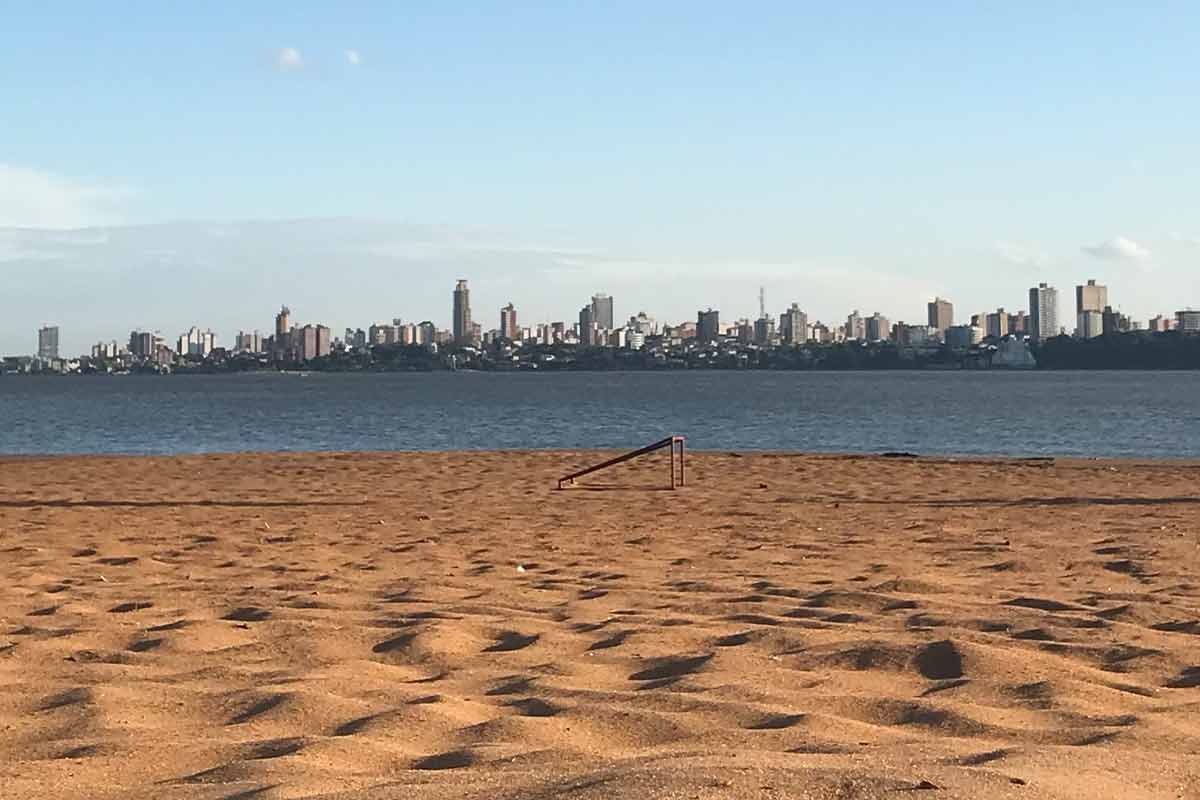
The weather in Paraguay can get very hot during the summer, sometimes to an uncomfortable level, whilst the winters are a lot cooler in comparison.
Now let’s have a look at different destinations and their annual patterns.
Ybycuí
This region is not as extreme as other cities in the country, especially those in the South.
During the Summer, which runs from November until January (remember Paraguay is in the Southern Hemisphere) average temperatures range from 78-81°F, with highs of up to 90°F.
It can get quite muggy and humid during the summer, so make sure you bring lots of water with you. The winter, which runs from June until September, is much cooler in contrast, with averages of 64-68°F, and highs of 75°F as well as lows of 55°F.
Rainfall is at its lowest in August with 2.1 inches falling throughout the month, whilst the rest of the year averages between 5.3 to 6.5 inches for each month.
Asunción
This city in comparison is a lot hotter. The hottest months of the year are December and January, where average temperatures hover between 80-82°F, with scorching highs of up to 96°F.
Similar to the rest of the country, temperatures drop off heading towards the winter months.
June and July are the coolest months, with an average temperature of 66°F, with highs of 77°F and lows of 55°F.
Rainfall is high and averages around 130-150mm for most of the year, although there is an extreme drop-off in the winter, with between 25-50mm falling for each of June, July and August.
September until November are the very best months for seeing wildlife. You can head with this nature tour from the capital, where you’ll spot various bird species such as the Chaco Chachalaca (we love this name) as well as the Toco Toucan
Encarnación
This city is located further South, with again very hot summers. During this season, you can expect average temperatures of around 77-79°F, with highs of up to 90°F (and with its nearby beaches perfect for cooling-off during the mid-day sun).
Similar again, the winter is a lot cooler with averages of between 59-63°F, with lows of 50°F and highs of 68°F.
And again, precipitation is consistent from September until June, with around 140-170mm falling throughout each, with a drop-off in July and August, where only 100-110mm has been recorded historically.
Best Time to visit Guyana?
Located along the Atlantic Coast, Guyana experiences tropical weather year-round.
This is characterized by mostly hot temperatures and a rainfall pattern that varies extremely depending on the season.
Georgetown
This city is consistently hot throughout the year, with daily averages of 77-81°F. The hottest months of the year are from August until November, with highs of 86°F and lows of 73.5°F.
On the other hand, January and February are usually the coolest, where lows can dip down to 70°F, whilst averages are still pretty warm overall at 77°F.
Rainfall however does vary pretty significantly, with the months of May-July receiving as much as 300mm of downpour for each month!
February, September and October are the driest with around 100mm each (being honest it’s not that dry), with all other months falling somewhere in-between the two extremes. A perfect time to head on a guided bicycle tour through the Guyanaese capital.
Kaieteur National Park
The park and surrounding area tends to be hotter than the capital, due to its unique placement between the Amazon and the Guiana Shield.
Average temperatures range from 79-81°F throughout the year, and are pretty consistent day in day out.
September and October are the hottest months to visit, with averages of 81°F, highs of up to 92°F and lows of a still pretty decent 73°F. January and February are the coolest months, with an average temperature of 79°F, and lows of 71.5°F.
This area can get pretty wet due to its tropical setting, so make sure to bring a backpack with towels and a spare change of clothes when resting.
The wettest month of the year is May, with roughly 230mm of downpour throughout the month. The driest month is March, with around 95mm of rainfall.
Best Time to visit Venezuela?
Mérida
This city is a lot cooler than most other destinations in Venezuela, due to its elevation and location on the Andes.
Annual temperatures are pretty stable, with averages of 67-70°F for every month. May until October is considered the hotter time to visit Mérida, with highs of up to 81°F and lows of 59°F (temperatures dip quicker due to the mountain climate).
January is the coolest month of the year, with lows of down to 55°F, with highs of up to 79°F. The rest of the months fall somewhere in-between. Rainfall is pretty staggered throughout the year. December until March is quite low with around 10-50mm falling for each month.
April until June is the first of two wet periods, with between 150-200mm of downpour throughout each month. July sees a big drop-off, with only around 60mm falling for each.
Finally, August until November sees another dramatic increase in rainfall, with between 150-220mm falling for each month (god bless the unpredictable and unstable climate of the Andes!).
Caracas
You can read up about George’s experience traveling to Caracas on this blog. In terms of weather though, you will find that capital is fairly consistent temperature-wise throughout the year, with averages of between 72-75°F. The hottest months of the year are usually April, May and September, with highs of up to 81°F, and lows of 70°F.
On the other hand, January and February are usually the coldest, with averages of 72°F, lows of down to 64°F and highs of 77°F.
Rainfall is pretty low from January until March, with only around 13-15mm falling for each month, with around 3-4 days of rain for each.
June until October is the indisputable wet season, with between 120-140mm falling throughout each month. Overall, April is the best month to visit Caracas.
Will you be traveling to Venezuela soon? See this guide to the best time to visit Venezuela for the full lowdown on what to expect from the climate here as well as tips on where to go.
Los Roques
This archipelago is pretty much perfect to visit year-round! December until March is usually a little cooler than the rest of the year, with average daily temperatures of 77-79°F. Highs for these times of year are usually between 84-88°F, with lows of down to 70°F.
April until November is slightly hotter, with averages of 80-84°F, with highs of 90°F and lows of 73°F. Rainfall is consistent throughout the year, and actually quite low for an island lying within the Caribbean.
From January up until October, you can expect around 10-30mm falling throughout each month. November and December are slightly wetter, with an average recorded 60mm falling for each month.
Got travel insurance for South America?
Best Time to Visit South America
We’ve come to an end of our guide on the best time to visit South America.
This huge continent hold endless possibilities for all visitors, no matter what style of travel is intended.
The weather varies throughout the year, and in certain countries the summer, winter and spring seasons can bring a high risk of flooding and torrential rains.
Now you have a better idea of what to expect, take a look at some of the best places to visit in South America that you can add to your travel itinerary.
👉🏽 P.S. If you’ve found this guide helpful, buy us a coffee here to say thanks! Or, support us by downloading our South America Travel Bible to get our best content.
“Dear traveler! Some links in this post contain affiliate links. Meaning, if you click through and make a purchase, book a hostel or sign up for a tour, we may earn a small commission at no additional cost to you. Your support means a lot and helps us to carry on traveling and maintaining the quality of this site for you.”

